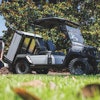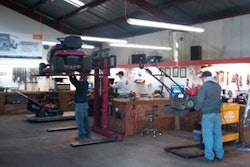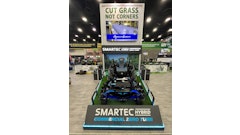Flyers are a great form of advertising for your open house, and throughout the year, to attract customers, and showcase products and services.
What elements to include in a flyer depend on the purpose of the mailing. Brian Steensma, of Steensma Lawn & Power Equipment in Kalamazoo and Plainwell, MI, does flyers mainly for open house occasions, and has it down to a system of what to include that works for him and his business.
Content
For his spring and fall open houses, Steensma sends customers an 11x17 piece of paper folded to have six different sides. “We keep the flyer looking the same each year,” says Steensma. “That way, customers know what to look for when they receive it and won’t mistake it for junk mail and throw it away.”
For the spring open house, which is hosted for commercial customers only, he starts out with a letter, discussing the previous year and thanking customers for their support.
“We treat the flyers and open houses as more of an opportunity to thank customers for their business rather than asking them for more,” says Steensma. “We thank everyone for their business and encourage them to come in and give us feedback.”
Most dealers will feature new or marked-down products in their flyers. Steensma chooses to feature just a few choice products. “We used to do a lot more products in the flyer,” says Steensma. “Now we just offer a quick rundown of the new products being offered by manufacturers, and one page will feature 3-5 specific product specials we have going on at the time.”
Steensma also sends commercial customers a list and order form with popular parts, making it easier on them to get what they need.
Customers
Steensma’s customers sign up in the store to be on his promotional mailing list. His database currently has 43,000 names and addresses, though he rarely sends mailers to the full list. For the commercial open house, he will send flyers to 2,200 commercial accounts.
Steensma estimates he receives a 25-26% return on the money he invests in flyers. “Of the 2,200 commercial customers we send an invite to, 600 will show up at our open house,” says Steensma. “The company we work with will add a first name to the mailing for a better response.”
The response rates you get and how viable a tool a flyer is depends on your market. “It depends on where you are regionally,” explains Steensma. “For our more rural location, we use the local paper and flyers for advertising. But the Internet is definitely showing more of a presence.”
Creation and Cost
Using a printing service to have your flyers created can be more cost-effective, especially as your mailing list grows. “It’s not cheap, at $1,000 for printing and mailing, but in the realm of advertising it’s not that much money,” says Steensma. “Every year the amount we mail goes up, and so does postage. We save by having them bulk mailed at the printer.”
His first few years sending out flyers, Steensma and staff handled the mailings on their own. (See the below sidebar.) With 700-800 invitations, the cost of paper, envelopes and postage really added up.
“Doing it ourselves became too much,” says Steensma. “When you add it all up, vs. doing the mass mailing with labels and bulk postage, it is more cost-effective for us to pay to have it done.”
Steensma also saves on valuable time buy not doing the mailing in-house. An even more affordable option would be taking advantage of mailer and postcard programs many manufacturers offer.
Whether doing a mailing in-house, through your manufacturer or hiring it out, keep an eye on costs, content and what works for your target market.
Create Your Own Flyer in Microsoft Word
Step 1 - Begin by thinking about what you want to include in your flyer design. Think about your target market, colors and pictures you want to use, and what information you will include.
Step 2 - Open a new Microsoft Word document. Type in what information you decided you wanted to include on your flyer.
Step 3 - Under the Home tab at the top of the screen, you can change the font, size, and color of your letters. You can bold, underline, or use italics to make certain words or sentences stand out.
Step 4 - Click on the Page Layout tab and choose “page borders” from the page background section. Here you can choose the color, style, width, and location of your border. Click OK when you are done.
Step 5 - Click on the Insert tab. Here you can choose to insert clip art, pictures, charts, or tables into your flyer. To insert any of these items, simply click on whichever you would like to insert (there is an icon for picture, clip art, shapes, chart, word art, etc.). By clicking on any one of these, a menu will pop up or drop down on your screen. Choose what you would like to do from that menu.
Step 6 - Adjust the size of your inserted graphic by lining your cursor up at one of the corners of the box that surrounds your image. Left-click on your mouse, hold and drag the corner of the box until you are happy with its size.
Step 7 - Run a spell check on your flyer to avoid any embarrassing errors. Click the Review tab; you can find spell check at the far left.
Step 8 - Compete a final review of your flyer to see if the layout suits your needs. Click on the View tab and then on “full screen viewing.” This will give a view of what your flyer will look like. If you are satisfied, click on Save. If you would like to go back for more editing, hit the “Esc” key on your keyboard.



















